| Posting Rules | | post new threads post replies post attachments edit your posts is are code is are are are | | Similar Threads | | Thread | Thread Starter | Forum | Replies | Last Post | | | greyhound37 | Marine Electronics | 3 | 24-12-2012 09:59 | | | SS Little-Devil | Marine Electronics | 4 | 21-06-2012 16:17 | | | pjazz | Marine Electronics | 13 | 11-11-2010 15:14 | | | witzgall | Construction, Maintenance & Refit | 6 | 18-10-2010 05:36 | | | Hubec | Marine Electronics | 3 | 04-03-2008 20:01 | Privacy Guaranteed - your email is never shared with anyone, opt out any time. - New Sailboats
- Sailboats 21-30ft
- Sailboats 31-35ft
- Sailboats 36-40ft
- Sailboats Over 40ft
- Sailboats Under 21feet
- used_sailboats
- Apps and Computer Programs
- Communications
- Fishfinders
- Handheld Electronics
- Plotters MFDS Rradar
- Wind, Speed & Depth Instruments
- Anchoring Mooring
- Running Rigging
- Sails Canvas
- Standing Rigging
- Diesel Engines
- Off Grid Energy
- Cleaning Waxing
- DIY Projects
- Repair, Tools & Materials
- Spare Parts
- Tools & Gadgets
- Cabin Comfort
- Ventilation
- Footwear Apparel
- Foul Weather Gear
- Mailport & PS Advisor
- Inside Practical Sailor Blog
- Activate My Web Access
- Reset Password
- Customer Service
  Beneteau Oceanis 41 Used Boat Review Hans Christian 34/36 Catalina 320 Used Boat Review Tartan 37 Used Boat Review  How to Create a Bullet-Proof VHF/SSB Backup Tips From A First “Sail” on the ICW Tillerpilot Tips and Safety Cautions Best Crimpers and Strippers for Fixing Marine Electrical Connectors Lashing for Strength Are Wrinkles Killing Your Sail Shape? Superlight Anchors: Not Just for Racers Refining Furling Line Fairleads Impact of Modern, Triangular-Design on Boat Performance Keel and Rudder Design Basics Diesel-Electric Hybrids Vs. Electric: Sailing’s Auxiliary Power Future Sailing Triteia: Budget Bluewater Cruising A Brief Modern History of Fiberglass Another Look at ‘Dustless’ Sanding How Much Does it Cost to Own a Sailboat in Quebec,… Anode Basics: Dos and Don’ts PS Advisor: Acid Cleaning Potable Water Systems Product Hacks: Velcro, Bounce, Anti-Skid Mats and Pool Lights Stopping Holding-tank Odors Giving Bugs the Big Goodbye Compact Scuba Kits for Sailors Cold Weather Clothes to Extend the Sailing Season Five Best Gloves: Sailing and DIYing in All Weather Sailing Gear for Kids Full-Time Ocean Trash Cleanup in the Arctic Circle Boats That Fly? How High Tech Rocked the America’s Cup R. Tucker Thompson Tall Ship Youth Voyage On Watch: This 60-Year-Old Hinckley Pilot 35 is Also a Working… On Watch: America’s Cup- Sailboat Reviews
- Sails, Rigging & Deck Gear
Scanstrut A Best Buy in Radar Mounts For MastsOther off-the-shelf mounts from kato, edson and nautical engineering each have strong points. the furuno seems overly complicated and the d. lily mount, while inexpensive, is heavy.. Radar (radio detection and ranging) is a marvel. It was invented and patented 75 years ago. But the British perfected it for use during World War II. The English claim radar won the war. George Patton thought he won it, with a minor assist from the United States industrial prowess. The Russians claim… Radar needs no explanation other than what everybody who has one knows: It takes a bit of practice to get good with it. The lingo is fierce-VRM/EBL, MARPA, CPA, SHM, RTM, DRM, TCPA, GRD, FTC, STC and don’t ask until you need to know. But other than a tendency to spin off a bad case of acronymphobia, the only other hang-up when you elect to equip your boat with radar-which is basically a DSP coupled to a CRT or LCD-is where to hang the antenna, a.k.a. the scanner. If you have a big boat, the antenna can be a rotating arm (open array). Most sailboats use a radome, which is about the size of an old-fashioned wheel of cheese. Where to put it is often not a simple matter. Sometimes, a custom mount is the answer. If you have a ketch or yawl, youre singularly blessed. The antenna goes on the forward side of the mizzen mast. Perfect. Just mind the main topping lift. However, those with sloops and cutters face some decisions. The radar antenna can go on the front side of the mainmast, on the backstay or on a pole mounted on the stern. Referring to the latter, some manufacturers call the stern mount a radar mast or tower. However, for clarity, well call it a pole. A few place it-along with a lot of other electronic frippery-on the increasingly popular arches, which makes mounting the radar antenna no challenge at all. On sailboats, radar arches generally are so ugly, wed like at this time to postpone talking about them. We do have here at Practical Sailor some sense of aesthetics. Wherever the radome goes, it should be high enough to avoid sweeping the crew. Its claimed that it is especially not good to get it close up in the eyes. Further, the higher its mounted the further it can see, because its a line-of-sight instrument, but too high and it can’t see objects under its angled beam, in what is known as the shadow sector. (For those who fret, the subject of radio radiation is covered in a new Bulletin #65 published by the Federal Communications Commissions Office of Engineering and Technology. It is entitled Evaluating Compliance with FCC-Specified Guidelines for Human Exposure to Radio-Frequency Radiation. If you want to avoid a heavy dose of Federalese, you may, generally speaking, regard as equally harmful a small radar antenna and the microwave in your kitchen.) If you want radar to help you navigate narrow, buoy-marked channels, the radar should be fairly low, a foot or two above standing-up head level. If you want a radar to detect ships and land at fairly long range (maybe a dozen miles or more), higher is better, which means up on the mast. High or low? Somewhere between 10′ and 20′. Its something you alone can consider. Bear in mind that mast mounting your radar places weight and windage aloft; it also will make climbing the mast more difficult. If you intend to use your radar while under sail, you can consider a gimbaled (athwartship only) or adjustable-level mount. Radars lose some of their punch when the boat is heeled. Because most radar antennas have a vertical beam width of 25, a boat heeled more than about 15 degrees is pinging airplanes or submarines. Its acute for targets on either beam, less so for those directly ahead or astern (unless youre pitching). To sort out the complications, Practical Sailor will deal in three separate articles with the off-the-shelf choices in mast, backstay and pole mounts, and attempt a summary at the end of the third one. The summary will include costs, which can range from a couple of hundred dollars to $3,500 for a fancy, multi-purpose pole mount. This review will be about mast mounts. Most mast mounts are made of aluminum (cast or welded-up plate), usually white powder-coated. A few are fabricated with stainless tubing, which is more expensive. Whatever the material, the mounts call for more holes in your poor mast. To attach the radome, there are some mounts in which youre expected to drill holes in the mounting plate, but with either the radar set or the mount, youll come by a template to assist you. For others, you specify what make and model of antenna you intend to attach to the mount, and it comes with holes pre-drilled or slotted. A very nice development of the last several years is that, without any industry discussion, there seems to be a tendency to make the four holes 6″ on centers. Thats good, admirable standardization, particularly because Raytheon recently changed the hole centers on its new Pathfinder models-without warning mount makers. Heres the line-up, which pits the international powers, Edson (United States) and Scanstrut (England), against all the little guys. Edson Edson is a 139-year-old New England company that tends to dominate any product market it enters, mostly because it makes good on its claim that everything it makes is quality. Fairly big (25 employees), for a primarily marine company, Edson is most widely known for pumps and steering systems, especially pedestals and pods. Edsons Hank Keene said that for radar, Edson likes pole mounts because it places the radome at the optimum height, which he said is 10 to 14 feet above the water level. However, because of the popularity of mast mounts, the company last year introduced a mast mount, which comes in three sizes. Edsons new mast mount is a well-done, one-piece, high-quality aluminum casting, simple and strong. Edson has its own foundry. The middle-sized mount (for 17″ to 20″ radomes) weighs about 3 lbs. The entire mount, including the feet, has an extremely glossy baked-on urethane coating. The mounts top surface has four slots for stainless steel bolts to attach most any radome. The two vertical support sections are fastened with stainless bolts to four articulated aluminum feet affixed on the mast with three rivets each. The rivets are supplied by Edson. The rivets make this mount special, said Keene. Theyre solid, no hole in the middle, serrated and each will take 500 pounds. Edsons mast mounts are priced, list and discount, at $258/$199, $272/$239 and $306/$269. Edson has in the works a circular guard rail made of thin aluminum tubing, which will be powder-coated. It probably will be similar to the one offered by Nautical Engineering (see below) and may be available by the time this is published. PYI The other biggie is Scanstrut, an English manufacturer whose mounts are imported by PYI, along with Max-Prop, Whitlock steering and PSS shaft seals. The British maker provides for Edson very vigorous competition in radar mounts and pedestal-pod assemblies. Scanstrut has strong ties to Autohelm, the British instrument maker, and with the huge (110,000 employees) Raytheon Corporation. In fact, a Scanstrut mount is an accessory for Raytheon and Autohelm radars. Besides two new mounts for Raytheons Pathfinder series ($250 list for the 18″; $350 for the 24″), Scanstruts eight established models cover virtually any radar antenna. PYIs Scanstrut manager, Robert Bright, said, Scanstruts new Raytheon mounts are the cleanest and lightest. No adapter plates are needed, which keeps the cost down. The small, one-piece Scanstrut weighs just over 2 pounds. Even with the stainless guard (a separate item), the weight is about 3-1/2 lbs. Scanstruts entire line, from the small one-piece mounts to the clever two-piece models (see photo) reflects excellent design and fabrication. All use small articulated, cast-aluminum feet that, like the new Edson, can be riveted to a mast. A compliment was paid to Scanstrut by several other small manufacturers who said, in identical language, Everybody copies from Scanstrut. The Scanstrut mounts for radomes up to 18″ (not open array antennas) range in discounted price from $180 to about $200. In addition to its excellent mounts, Scanstrut offers through PYI a unique, two-piece cable conduit. Fasten the flat piece to the mast and snap on the cover with the cable tucked inside. Available in two sizes (1/2″ and 3/4″), the PVC, at about $4 a foot, is not cheap, but its handy stuff, on the mast, inside, anywhere there are cables or wires to run. Stainless by Kato One of the few makers of stainless steel mast mounts, Kato Marine is a small Annapolis company more widely known for stainless davits and outboard hoists. The 10-year-old company makes two sizes of its mast mount-for small radomes (16″, 18″ and 20″) and one large one for 24″ domes. The small model (6 lbs.) is made of 3/4″ stainless tube; the large one (12 pounds) is 1″ tube. The small model lists for $365, the large one for $445. Defender discounts them to $340 and $400, respectively. Kato mounts must be considered semi-custom. A buyer supplies, in response to a questionnaire, the make and model radar, and mast dimensions or type (Kato has on file information about hundreds of production boats and all major spar makers.) What you get for a considerable chunk of money is an amazingly strong, nicely welded and polished assembly (most of its eight employees are welders) that fits like a glove. The arms that attach to the mast have only a 3/16″ give. Keith Olver, a partner in Kato and a longtime mast expert, said he likes to see the unit attached with stainless machine screws. He concedes, however, that high-quality aluminum rivets might be stronger. When using any stainless fastener, the usual precautions must be taken to avoid dissimilar metal corrosion. Finally, what makes the Kato mounts especially attractive is that, by design, they are both a mount and a guard rail (see photo). Olver said that the guard circle limits sail chafe. Far more importantly, he said, the guard ring protects the radar from being beaten to death when the sails leech flogs it. Damage to the radome itself is the biggest problem with mast mounts, he said. In any kind of breeze, the sails leech actually hammers it, every time you tack. Nautical Engineering Nautical Engineering is a tiny Michigan company that offers a small line of mast and pole mounts for sailboats and powerboats. The 24-year-old company, considered in the industry to be a high-quality innovator, makes a small line of boat hardware, including the AnchorLok, a patented pair of clips to hang a Danforth-type anchor on the bow pulpit. For its radar mounts, NE uses aircraft-grade aluminum, anodized, powder-coated or covered with baked vinyl, or stainless steel. Whatever metal or treatment seems best, we use, said Bob Ahern, NEs owner. NEs most popular mast mount, which comes in two sizes to fit most radomes and masts, has a patented mounting system which Ahern said was designed to provide structural strength and stability. Its real virtue, said Ahern, is that it wraps around the mast and fastens on opposite sides, rather than mainly toward the front. The smaller version weighs 7 lbs. and is $275; the larger model, which weighs 8 lbs., lists for $348. Cognizant of the chafe problem, NE offers for the mounts a cleverly designed guard made of aluminum tubing with a powder coating. Extremely light, the big one (26″ diameter) weighs but 2 lbs. and lists for $155; the smaller (20″ diameter) weighs only 1 lb. and lists for $125. Theyre easy to mount and, being very light and very effective, make good sense. D. Lillys Line There used to be a Donald Lilly (he started the Long Island company in 1968), but hes long gone, replaced by a couple of family partners who keep alive Lillys name. This small company (five employees) is known mostly as a principal makers of mounts for marine radio antennas, but also makes a fairly full line of sailboat and powerboat radar mounts. Whats unusual about Lillys mast mounts is that (1) they are white powder-coated stainless steel, and (2) they are very modestly priced. They are heavier than those made of aluminum. John Jennings, Lillys son-in-law, said, We just believe that stainless is stronger and will last forever. He said they are powder-coated because thats what customers want. Weve never had a request for a polished stainless version, he said. We use a Long Island powder-coating company that really knows its business. Lillys model 4000, which weighs 11 lbs., is a universal mast mount that accepts most makes of radar antennas. It lists for $258; West discounts it to $197. It fits masts from 4″ to 8″ wide. The small model 2000, for both powerboats and small sailboats, can be mounted vertically, horizontally or at an angle desired. It has 90 angle feet that can be made to fit any angle. Not shown in the photos, it lists for $176; West sells it for $140. Furuno For its small radar sets, Furuno offers a mast mount apparently made for Furuno by some company called Aumont. Defender sells it for $240. The mount works; weve seen the mount on a number of boats. However, its a contraption by any accounting, the Aumont mount is a seven-piece nightmare that comes with a dozen stainless steel machine screws and lots of washers. Took about 15 minutes to do the assemble loosely, as recommended. Its adjustable to fit most small- to medium-sized masts. The instructions say to fasten the assembly to the mast with stainless rivets, two sets of four-which is not easy. Tightening it all up, in place, must be a knuckle-buster. Its only real virtue, in our view, is that its light-4 lbs. We didnt check to see who Aumont is, mostly because there are lots of better-designed mounts that are easier to install and that wouldnt worry you about whether all those machine screws are tight. The Bottom Line There are other makers of mast mounts, including two gimbaled mast mounts. They are the widely known Questus, handled by Hood Yacht Systems, and the Waltz RLS (radar leveling system) handled by Performance Marine. Both are seen more often on stern poles, as well as backstay versions. They will be discussed in a later article. There also are custom fabricators that will make up a mast mount in virtually any configuration. Among these is an expert marine stainless shop, Tops-In-Quality, 314 E. Huron, Marysville, MI 48040; 810/364-7150. Looking at off-the-shelf mast mounts, the stainless Kato, which is both a mount and a guard, is expensive and heavy. The Lilly powder-coated stainless models are heavy, but theyre also inexpensive, especially the small fits anywhere model 2000. For medium to large sailboats, the Nautical Engineering line, made of aluminum, very strong and only a bit more money, seems preferable to Lilly. All Kato, and most Lilly and Nautical Engineering models have a slight liability in that if the radome must come down for service, it must be removed from the mount, which remains on the mast. By contrast, Edson and Scanstrut used footed mounts that, by removing four bolts, permit lowering the radome and mount together. Edson and Scanstrut also stand out because of their modest weight, always a plus when adding gear up high. Edson, a top choice in most anything it makes, sets prices that might be considered premium. If you always choose top quality, youll go for Edson. However, Scanstrut has, in our view, the best combination of low weight, quality and cost. A Scanstrut mount is an all-around Best Buy. Contacts- D. Lilly & Company, 25 Linden Place, Port Jefferson, Long Island, NY 11776; 516/473-7779. Edson, 146 Duchaine, New Bedford, MA 02745-1292; 508/995-9711. Furuno, USA, 271 Harbor Way, South San Francisco, CA 94080; 415/873-9393. Kato Marine, 7416 Edgewood, Annapolis, MD 210403; 410/269-1218. Nautical Engineering, 700 Doheny, Northville, MI 48167; 248/349-1034. Scanstrut, PYI, Box 536, Edmonds, WA 98020; 425/670-8915. RELATED ARTICLES MORE FROM AUTHORLeave a reply cancel reply. Log in to leave a comment Latest Videos Fast Cruising Sailboat J 45 Choosing Anodes for Your Sailboat Leopard Catamaran Delamination – Leopard 42 Boat Review Fiberglass Boat Repair Kit ChecklistLatest sailboat review. 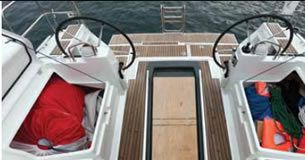 - Privacy Policy
- Do Not Sell My Personal Information
- Online Account Activation
- Privacy Manager
 - Forum Listing
- Marketplace
- Advanced Search
- About The Boat
- Gear & Maintenance
- Electronics
- SailNet is a forum community dedicated to Sailing enthusiasts. Come join the discussion about sailing, modifications, classifieds, troubleshooting, repairs, reviews, maintenance, and more!
Radar Dome Placement and Installation We put ours about 25 feet up from the cabin top on the mast. I personally believe this is the best place for it. There are a lot of opinions on this, but I feel that the mast wins out every time. Do not forget that a radar is line of sight. As such, the higher up you put it, the further it will 'see'. Thus, the benefits of the mast outweigh the negatives. We ran ours down the mast (inside). Do not be surprised if you have to unstep your mast to get it through unless you have a keel stepped. Even with keel stepped, you may not be able to pull that cord which is as big around as your thumb. - CD  I read on one of the other forums a post by someone who had attended a radar seminar given by I think Raytheon. Their advice for sailboats was a stern mounted pole. The reasoning being that while a dozen or so feet higher will give a bit longer range, you will lose detail close in where sometimes you really need it. Brian  Thanks! Thanks for the feedback. As always, many things to think about! I second mitiempo. There is not much interest on very distant targets, I mean 99% of time you want to know what is near you, posing threat. Exceptions for curiosity or tracking showers, there is little advantage of seeing a long range because its drawbacks. The most important, if it's mast installed, keep it as low as practical. Beyond not good short range definition, the real problem will be boat motion. The higher you install, the worse for target discrimination, false pinpoints, wrong reflections, MARPA, etc ...  Omatako said: My radar is a 16 mile unit and I often get images out at the 16 mile ring so I don't believe I'm losing range. Click to expand...  I have had only mast mounted radars and generally feel that this is the best location. Having said that I have an issue with mine that came up after installing a furling unit on our staysail stay. I now get an intermittent echo (quite often a double) directly off the bow which is disconcerting and a major distraction to say the least. Our radar is mounted at the first spreaders, well below where the staysail furling attaches to the mast. I did not have this echo with just the headsail furling unit. Anyone else have this problem? Main- amazing resolution with your Garmin on the plotter. I'm thinking of adding a second radar on a pole and running it to the 3210 in the cockpit, hoping that the offset pole will eliminate the echo off the bow. What do you think? I'm sure I am not the only one that has a narrow rip rap lined channel (app. 50') leading into my marina. With my mast mounted radar, set on the lowest scale, the cone overlaps both sides of the channel by about 50% rendering the image all but useless, except you can kind of guess at the middle. Our radar is about 18'-20' up. On our power boat the radar is app. 10' off the water and we can see the channel clearly (same Furuno 4KW units). I guess like everything else radar mounting is a compromise. jrd22 Your experience in the channel seems to validate lower mounted radar for good in close resolution (1/8 mile). Such as navigating a strange harbor at night and avoiding unlit boats. You're right - it's all a compromise. I will mount on a pole aft in any case as my boat is only 27' and nothing that big belongs on my mast in my opinion. Brian  I've ben following the (still sketchy) information on broad band radar. There now appear to be three players licensed to sell this. Its hard to tell how well the thing really compares but the touted advantages are: Small cable diameter Extremely Low power No warm-up time No tuning No radiation hazzard No mast shadow Exceptional resolution in close including soft targets (dinghy) 2 meters resolution at 24 miles UNKNOWN: Is all this true? How well does it integrate to chart plotters and other devices? Durability? Cost is now under 2 kilobucks. Our existing FURUNO is an old tiny monochrome screen on the 1984 vintage IVAN victim we are restoring. I will see if it still works next year but I anticipate the possible upgrade. I plan to listen to the unbiased sales staffs at the Chicago All Sail Boat Show this spring. Does anyone have things to say about broadband?  I'm considering moving m RADAR Dome from mast to stern. With a stern mount RADAR Dome on pole, arch or backstay mount, along with SSB utilizing backstay as antenna - has anyone had experience with this set-up and could advise pro's and con's. Curious to hear if there are SSB performance issues with RADAR on and/or off ?  Maine Sail, How was the performance when you had it back stay mounted?... I don't want a big pole sticking up from my stern, I just stepped my mast last year and did alot of work, I'd rather not do it again.....my sailmaker, certainly doesn't like a mast head mount.. So, is the backstay on a self leveling mount..a decent compromise?.... I don't live in Maine...although, I'd like to visit...Fog is more infrequent here.. if you ranked the installations..where would you put the backstay...2nd or 3rd? Maine Sail said: Being from Maine and cruising from Maine to Canada I find this statement from Raymarine rather odd. I also find it contradictory to their own installation manual that shows a picture of it mounted on the mast of a sail boat with a green check mark next to it for "good location". They also say "Mount the scanner as high as possible above the waterline for better long range performance" Also a standard 18" radome mounted on a mast, 25' above the water, will actually have the beam HIT the water at roughly 72 feet from the dome. If your mast is set back 12' from the bow of the boat this means that a mast mounted dome can see targets at 0' above the water the water 60' off the bow of your boat. Now add a seven foot boat height, for a typical Sea Ray, and you can see it 42 feet off your bow. The close in argument is not even an argument. If you need to see stuff on radar 42 feet from your bow then you are in some serious trouble. In contrast a 36 foot boat with a stern pole at 12 feet high could actually get a return from the bow pulpit. Again if you have something 6" off your bow that you NEED to see then you just have not done your job tracking targets... I have had radar mounted on the mast, a Questus back stay mount and a pole. I currently have it on a pole and HATE IT for performance reasons. Even when I had it on the mast, on three other boats I've owned, I could pick up my boat neighbors in the mooring field with no problems. Even in Maine, where fog was invented, I have yet to find more than 4 or so days out of the last 20+ years where the visibility was less than 75 feet. If you have not acquired a target by the time it gets that close you're just not doing your job. As someone who has spent literally thousands of hours operating radar in the fog, as both a commercial fisherman and a pleasure boater, there is NO question that a mast mount, 22-25 feet up, would be my preferred placement. Eventually I will remove my pole and place my dome on the mast but the boat came this way and the radar pole has been painted around with Awlgrip. I clench my teeth every time I am in 6+ foot swells, and fog, and keep loosing targets and having to re-acquire them due to the low dome height when in a trough. I rarely if ever had this problem with domes mounted on the mast. If you only sail in protected foggy bays with no swell or chance of a sea a pole mount can suffice but if you venture into the open ocean, at night, or in the fog, a higher dome placement will track and keep targets on screen far better. It's not all just about radar either..... Things to do when in fog to be a good boater and to be courteous to others. Radar Reflector = BUY ONE AND USE IT!!!! Just because you choose not to have radar does not mean you should choose to be invisible or nearly invisible to the rest of the world who may be practicing good collision avoidance. VHF = USE IT and by that I mean turn the thing on and monitor VHF 16 or at least scan 16 and the shipping channels. PLEASE! The rest of us don't have your cell number on speed dial. "Vessel rounding 2KR what are your intentions, over?........." Silence..........=not smart Running Lights = When the visibility drops use them. They do help and can add another 50-100 feet of warning. Fog Signals = Wal*Mart sells sports air horns for $6.00. Please get one and use it when applicable. Slow Down = A single sailboat traveling at 6 knots is covering 10.1 feet per second. In 100 feet of visibility the collision time to a fixed object is roughly 11 seconds from your first physical sighting. Of course you should have acquired this target LONG before 100 feet!! Now take two sailboats converging, each traveling at 6 knots, your collision time in 100 feet of visibility, from your first physical sighting, becomes just 5 seconds. You had better acquire your targets LONG before the stated by Raymarine "close in performance" even matters or you'll be in a heap of trouble.. A power boat traveling 30 knots, on a collision course, will collide with a sailboat doing six knots, at 100 feet of visibility, in under two seconds from the first sighting! You will NOT have enough reaction time to avoid a collision with a clown like this other than to have radar and been tracking him far ahead of the "close in performance". Think people don't go fast in the fog? Think again.. Some photo examples of what these reckless boaters look like: There really is a boat here 200+ feet off my stern. No radar, no reflector, no running lights, no horn signals and not even a VHF response. "Dumb dee dumb, sailing awayyyy, dumb dee dumb, doh', a boat, how'd that get there?" Here's a radar shot of that boat when it was actually showing up. It's the red spec just above the 18 foot spot off my stbd stern quarter. The two targets ahead and to port and stbd were two J Boats traveling together both of which had reflectors when they went by. SOME BOATS JUST DO NOT SHOW UP ON RADAR!!! The guy behind me owns one! 1st class clown (see speed above), no radar, no lights, no horn signals, no reflector and also not showing up well, and not monitoring VHF! For reference this is 400 feet of visibility from a few weeks ago (400 feet is generally fairly decent vis for Maine fog): And here's the screen shot with the cursor just over the closest radar image at 411 feet (upper left corner measures distance).: It scares me how many people are just plain dangerous and have no clue they are being so reckless. If they succeed once they do it again only this time with a greater level of comfort and confidence. So in summary I'd still opt for mounting the dome on the mast.. Click to expand...  Gary, Some boats just make poor targets on certain points of sail. I still picked him up and knew he was there but many would have missed him entirely.. I install all the systems out there Raymarine, Garmin, Furuno and all the Navico's, Lowrance, Simrad and B&G. By the time you tune out all the clutter on a Navico broadband, to make it useful for fog use conditions, it is performing very similarly to any of the other brands. I still believe Navico is leading the field in radar technology but I also don't think it is the always right choice for all conditions and every customer... I just did a delivery last week on a boat with a B&G 4G system and we spent hours tinkering with in in clear weather to get it adjusted to only nail the targets we actually wanted on the screen. Picking up lobster pots and boat wakes is simply detrimental to the screening of real targets in thick fog. The last thing I want on my radar screen is lobster 700 lobster pots, boat wakes, birds or white caps.. Broadband is nice stuff, and when it paints a target the definition is very good, I just find it needs a lot of adjustment to get rid of all the clutter it picks up. I really think they could do a lot better with their "autotune" feature... A guy who was with me on the delivery just ordered a complete Garmin system from me. He did this after messing with the broadband to get it to tune out the clutter. The week before he had done a delivery from from Campobello Island to Portland with a Garmin radar. He found he was able to tune the Garmin more easily especially in changing conditions but his primary use of radar is in thick Maine fog. When I upgrade my system I have strongly considered Navico but will still likely stick with Garmin. It's good we have options. The best advice I can give to anyone regarding radar is to run it anytime you run the plotter and especially in good clear weather so you can know how to adjust it to hit all targets in all conditions. It should be second nature to look at the sea state and make the changes necessary for optimal target acquisition.. I had it on today for the tall ships and missed one kayaker out of hundreds of targets. He was coming out behind a large sportfisher and was hidden from my view until I spotted him with the MK I eyeball.... I grabbed every other target on the water without issue. That is really all I can ask for... What about the backstay mount? Any better than the pole? I ended up going with a Garmin unit on the Questus mount on the backstay. It went on this spring, so I'm still getting familiar with it. Leaving the Atlantic Highlands last weekend on a Sunday morning there was no wind, so it was the perfect opportunity to play with the radar. There are no less than 100 boats out by Sandy hook on a Sunday morning in the summer, Under power, drifting, at anchor etc. Barges and Tankers. Adjusting the range is simple. It was a clear day, so I could see everything that was there with my eye and then compare it to it's signature on the screen. So Far I'm pretty impressed. It's going to take me awhile doing that in good visibility to get to comfortable with the new set-up. Now, for my buyers remorse. It occured to me after it went up that if I wanted to add a flexible solar panel on my Bimini top the radar unit could cast a shadow. Duh! I'll guess I'll cross that bridge when I get there. Top Contributors this Month  |


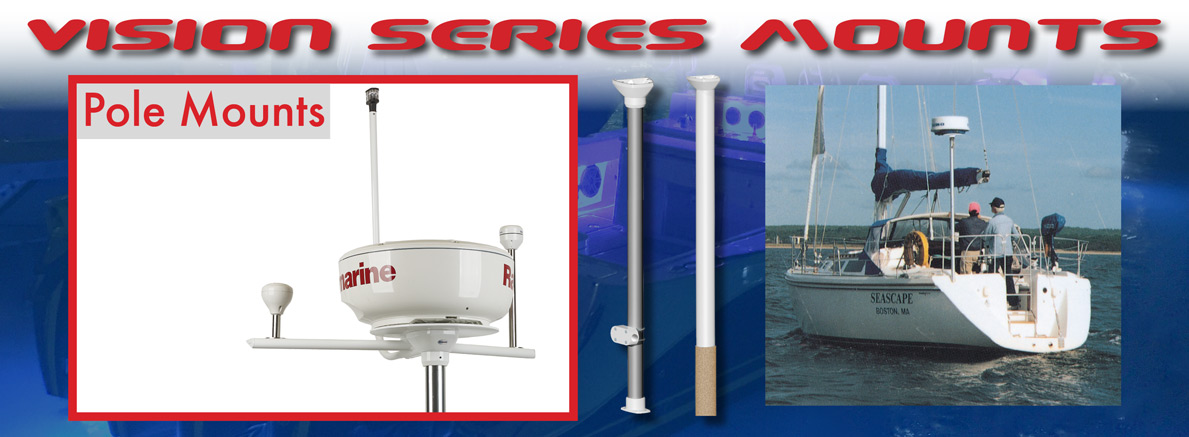

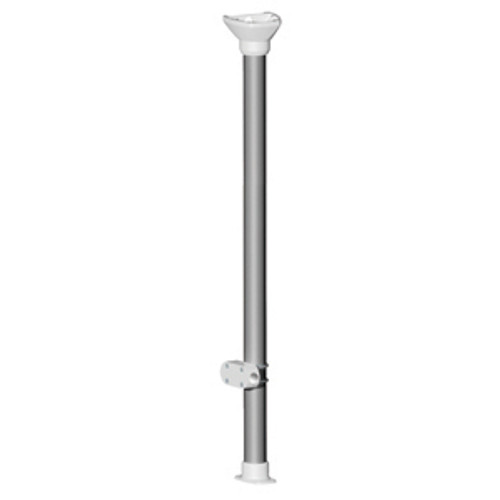
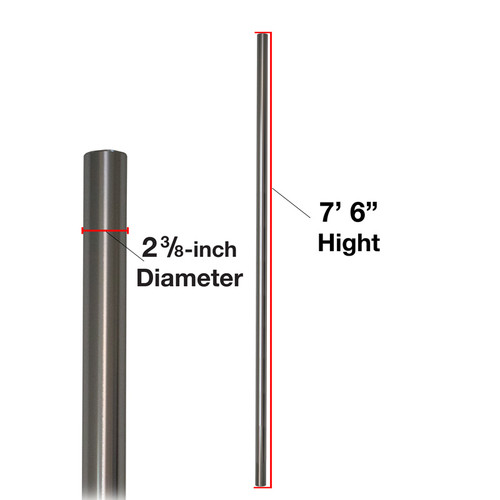



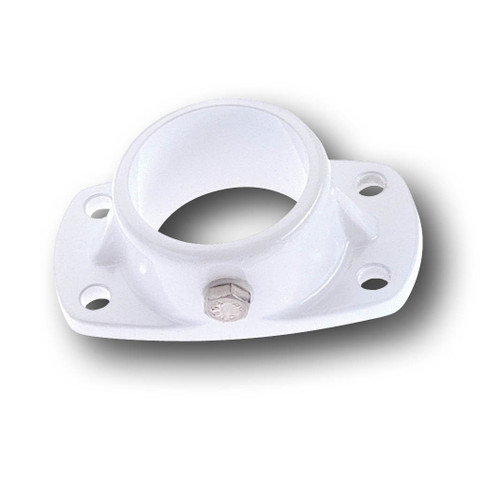

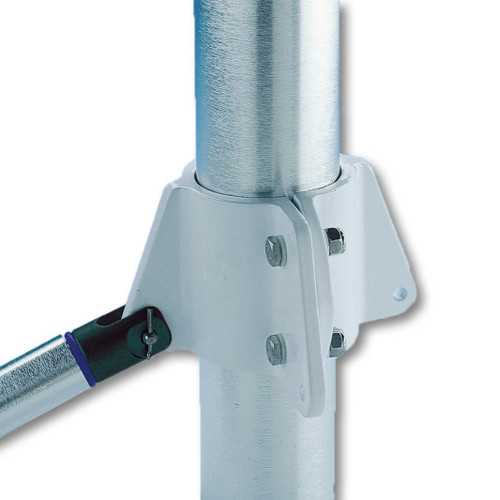
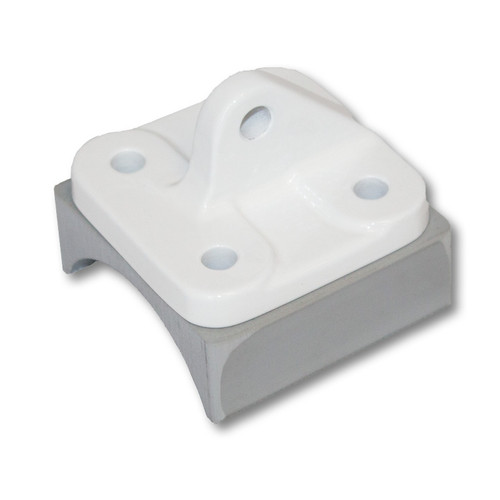
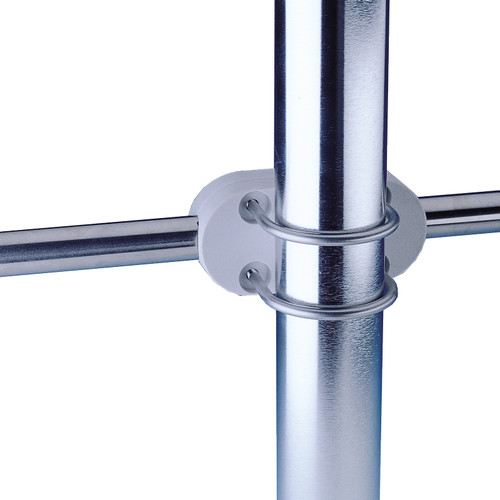

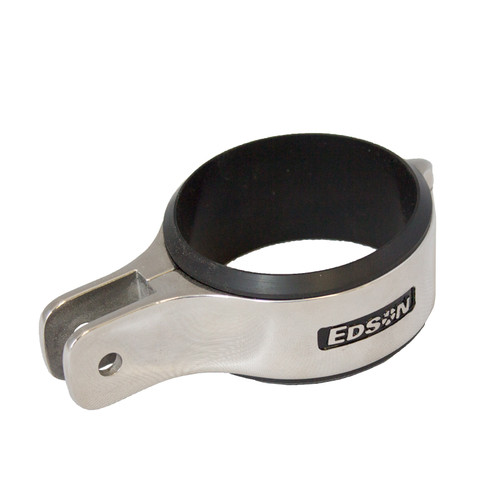


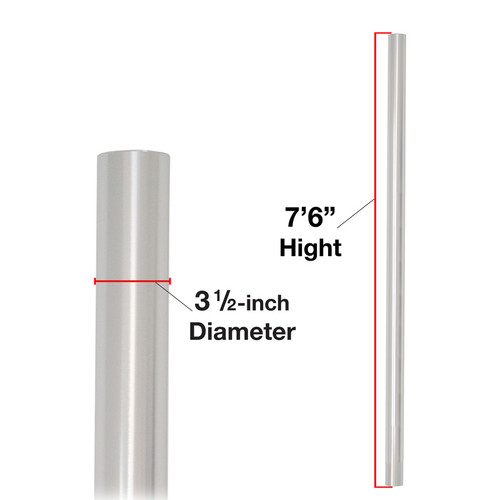


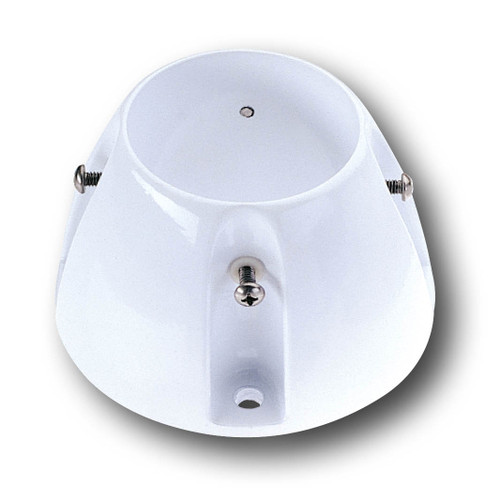
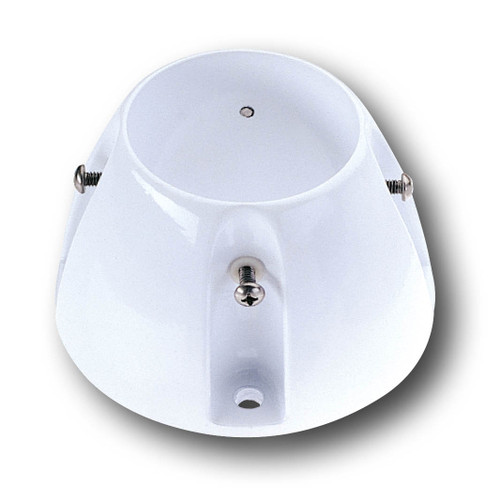
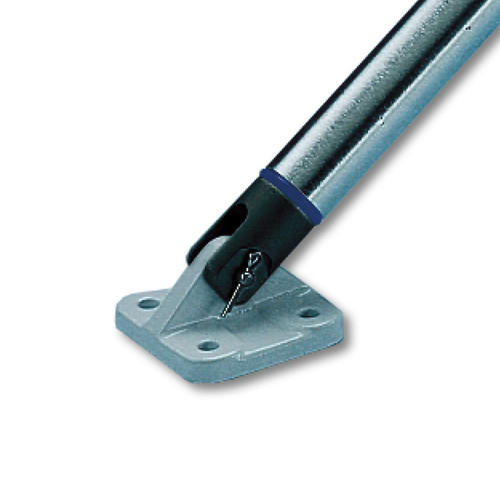
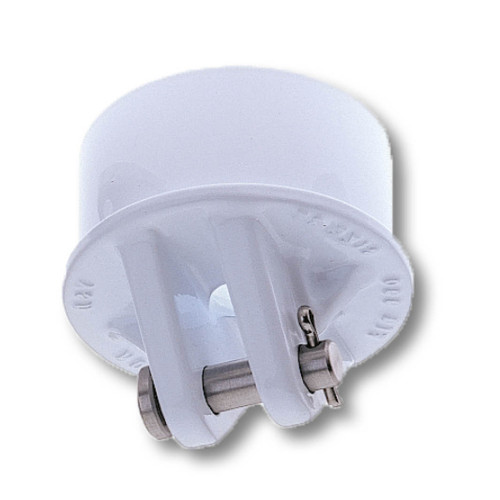
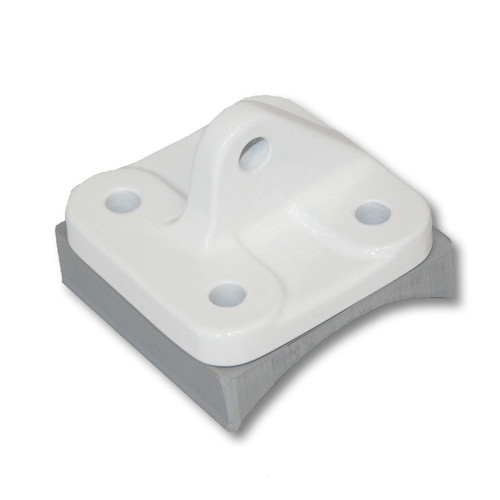
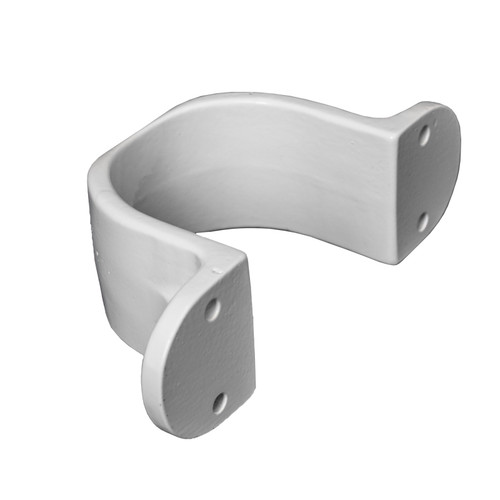










































COMMENTS
The pole can either be mounted on the deck or on an angled bracket attached to the transom. The radar can be fitted flat onto a top plate on the pole. At Scanstrut we use a 1.9m (6ft 4in) pole length for a deck mount or a 2.5m (8ft 2in) pole for a transom mount.
On a sailboat, the greater range of a radar mounted on the mast must be weighed against these advantages of mounting it lower: The scanner is less vulnerable to damage from an errant halyard or sail. The "cone of silence" is reduced so that targets close to the boat can still be "seen" by the radar.
Add to Cart. Seaview Pm-W4-7 4 Degree Wedge F/Power Mount. $71.13. Add to Cart. Seaview 12.5" Dual Mount F/Most Radar Domes - Top F/Sat Domes - Top Plate Required. $840.00. Add to Cart. Seaview 10" Modular Mount Aft Raked 7 X 7 Base Plate - Top Plate Required. $252.00.
Standard Vision Pole Mount 2-3/8" dia. x 90" Edson RADAR POLES are a convenient way to mount your radar antenna as well as many other navigation and communications antenna in one location. Built of lightweight marine-grade aluminum, the EDSON VISION SERIES POLE SYSTEM can be mounted to...
Self-leveling dual pole radar mounts and dual flush mount brackets enable boat owners to put their radar mount to multi-use. Consider the manufacturer's specs of current marine radar domes and then add other items to the dual marine radar mounts. Spreader lights, VHF antennas, cameras, and TV antenna domes can all be incorporated into a dual ...
The horizontal resolution of the radar will make more difference than the mounting position. To get narrow hr in a dome system you need a 24in model. Mounting low gives better close in resolution, while still being able to see far off thunderstorms. Weight in the rig is never good. Gimbling is unneeded complexity.
If you always choose top quality, youll go for Edson. However, Scanstrut has, in our view, the best combination of low weight, quality and cost. A Scanstrut mount is an all-around Best Buy. Contacts- D. Lilly & Company, 25 Linden Place, Port Jefferson, Long Island, NY 11776; 516/473-7779.
Fisheries Supply carries both compact dome radars and open array systems, making our products suitable for boats of all sizes. Additionally, a radar mount for a boat is essential for securely positioning marine radar systems, ensuring optimal visibility and performance. If installing a new radar or upgrading your equipment, choosing the right ...
Also a standard 18" radome mounted on a mast, 25' above the water, will actually have the beam HIT the water at roughly 72 feet from the dome. If your mast is set back 12' from the bow of the boat this means that a mast mounted dome can see targets at 0' above the water the water 60' off the bow of your boat.
Therefore, the higher you can mount the radar on your powerboat, the better. Adding a mount will also increase the radar’s range. Our 350mm (13.7in) series of Mounts will add around 0.2nm to the radar’s effective range, which is a useful extra margin for collision avoidance and navigation. Without a mount the beam of this radar would be ...